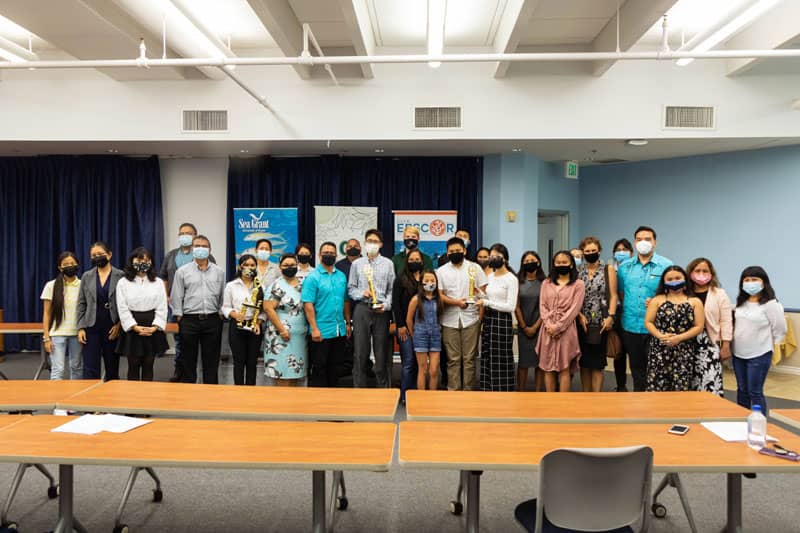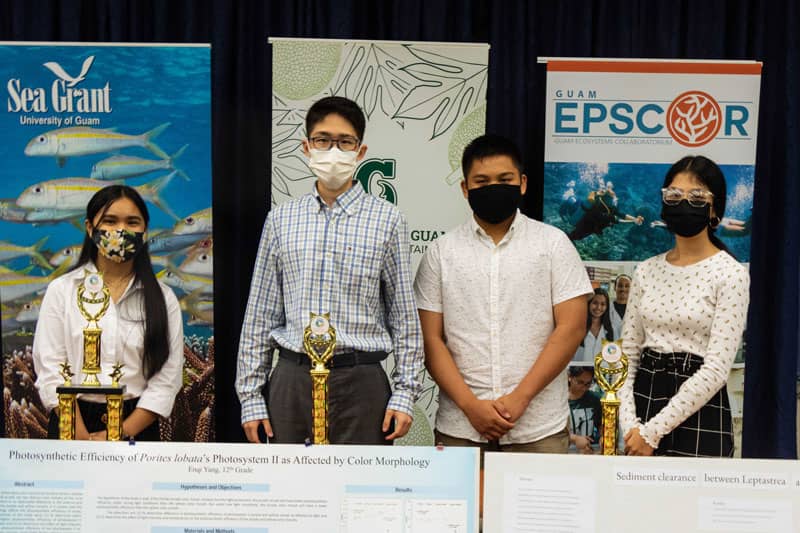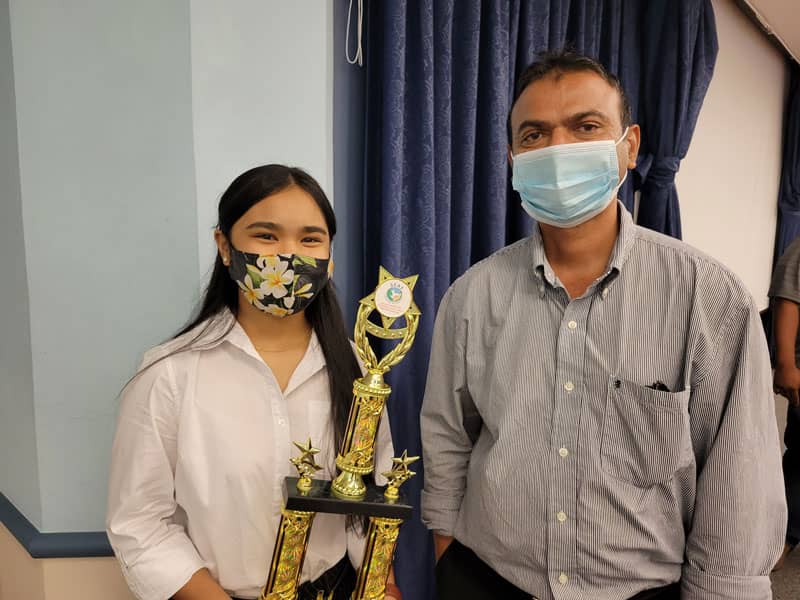10 high schoolers complete UOG’s STEM-focused summer program
10 high schoolers complete UOG’s STEM-focused summer program
10 high schoolers complete UOG’s STEM-focused summer program
8/19/2021
Ten high school students gained experience and mentorship in marine and environmental research this summer as participants in the National Science Foundation INCLUDES SEAS Island Alliance Summer Science Program. The program was hosted from June to July by the Center for Island Sustainability and the Sea Grant program at the University of Guam.
“Ridge to reef is the focus — what we do on the land and what we can do to minimize erosion and the negative impact to the sea,” said UOG Associate Professor of Education Cheryl Sangueza, Ph.D., and is the team lead for the program and co-principal investigator of the grant funding it.
The program, part of an alliance project crossing oceans with partners in the U.S. Virgin Islands and Puerto Rico, is supported by a $2.3 million grant from the National Science Foundation. The grant seeks to grow the number and diversity of students interested in pursuing careers in STEM fields.
Through the program, students are provided with training and research opportunities under several mentors.
The students each worked on a project, which they presented at a science fair and symposium held on July 2 at the University of Guam.
Winners of the NSF INCLUDES High School Science Fair:
- First Place: Cameron Jae Paulino, Notre Dame High School, “Field Instrumentation and Their Importance in Landslide Assessments” (Mentored by Associate Professor of Civil Engineering Ujwalkumar D. Patil, Ph.D.)
- Second Place: Enqi Yang, Harvest Christian Academy, “Photosynthetic Efficiency of Porites Lobata’s Photosystem II as Affected by Color Morphology” (Mentored by Assistant Professor of Bioinformatics Bastian Bentlage, Ph.D.)
- Third Place: Theo Flores, George Washington High School, “Sediment Clearance Between Leptastrea and Porites Massive” (Mentored by Assistant Professor of Bioinformatics Bastian Bentlage, Ph.D.)
- Fourth Place: Christel Kei Valerio, George Washington High School, “The Effects of Seed Priming as Demonstrated by Artocarpus Mariannensis” (Mentored by Center for Island Sustainability Associate Director Else Demeulenaere)
First-place winner Cameron Jae Paulino looked at different natural elements, including grass and rainfall, and their effects on a slope to understand what causes landslides in Guam.
“It is important that we study landslides because of the dangers and destruction they bring,” Paulino said. “Landslides can wipe out villages, injure people, and destroy buildings. They also destroy land, which then flows into the ocean, causing damage and destroying coral reefs. So we are also losing land to the ocean, which we will not be able to get back.”
Second-place winner Engi Yang experimented with the effects of temperature and light on corals for her project.
“I found out that the purple pigment colors are more efficient [regarding photosynthesis] than yellow colors in strong lighting conditions, which is important in coral restoration,” Yang said.
Sangueza emphasized the real-life application and impact of the research process for students.
“The practical applications are huge,” she said. “It is beyond what we see in terms
of traditional science research.”
According to Austin Shelton, Ph.D., director of UOG's Center for Island Sustainability
and UOG Sea Grant and principal investigator of the NSF grant, the winning students
may be able to represent the island at international science fairs through a partnership
with the Guam Science and Discovery Society.
About NSF INCLUDES SEAS Island Alliance
The National Science Foundation Inclusion Across the Nation of Communities of Learners of Underrepresented Discoverers in Engineering and Science (NSF INCLUDES): Supporting Emerging Aquatic Scientists (SEAS) Island Alliance is a collaborative project that takes place in Guam, the U.S. Virgin Islands, and Puerto Rico.
The program aims to broaden the participation of islanders in STEM fields. It is part of a comprehensive national initiative to enhance U.S. leadership in discoveries and innovations by focusing on diversity, inclusion, and increased participation in STEM at scale.



